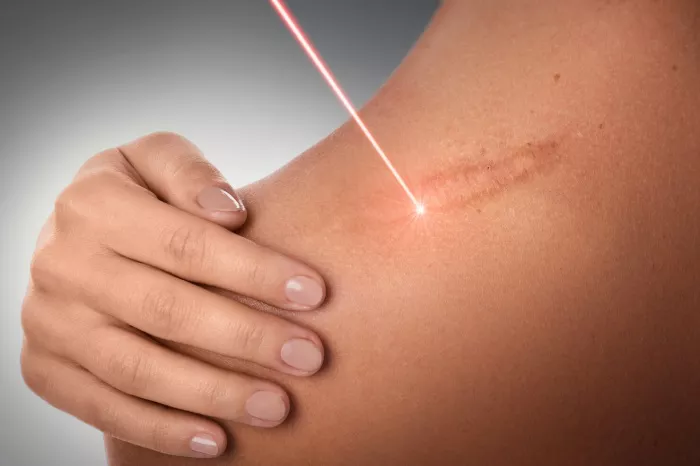Scar revision is a procedure aimed at improving the appearance of scars and making them less conspicuous. Whether caused by injury, surgery, or acne, scars can be a source of discomfort and self-consciousness. Preparing for a scar revision involves several steps to ensure the best possible outcome. This guide delves into the details of preparing for a scar revision, covering everything from understanding the procedure to post-operative care.
Understanding Scar Revision
What Is Scar Revision?
Scar revision encompasses various techniques used to minimize the appearance of scars, blending them more naturally with the surrounding skin. The procedure can involve surgical and non-surgical methods, depending on the scar’s nature, size, and location.
Types of Scars
Before preparing for a scar revision, it’s crucial to understand the different types of scars, as this influences the choice of treatment:
Hypertrophic Scars: Raised scars that remain within the boundaries of the original wound.
Keloid Scars: Raised, thick, and often larger than the original wound, extending beyond the wound’s edges.
Contracture Scars: These occur when the skin tightens during healing, potentially affecting muscles and tendons, restricting movement.
Atrophic Scars: Depressed or sunken scars, commonly resulting from acne or chickenpox.
Scar Revision Techniques
The method used for scar revision depends on the scar type and individual circumstances. Common techniques include:
Surgical Excision: Removing the scar tissue and closing the wound with fine stitches to create a less noticeable scar.
Laser Therapy: Using laser technology to resurface the skin, reducing scar appearance and improving skin texture.
Dermabrasion: A mechanical scraping technique that smooths the scarred skin layer.
Steroid Injections: Used for hypertrophic and keloid scars to reduce inflammation and flatten the scar.
Topical Treatments: Silicone gels, sheets, and other topical treatments can help reduce scar visibility over time.
Microneedling: Creating tiny punctures in the scar tissue to stimulate collagen production and improve skin texture.
Consultation and Evaluation
Choosing a Qualified Specialist
Selecting a board-certified plastic surgeon or dermatologist with extensive experience in scar revision is crucial. Look for professionals with positive patient reviews, before-and-after photos, and specialized training in scar management.
Initial Consultation
During your initial consultation, the specialist will evaluate your scar, discuss your medical history, and understand your goals. Key aspects to address include:
Scar Assessment: The specialist will examine the scar’s size, type, and location.
Medical History: Disclose any medical conditions, allergies, medications, and previous surgeries.
Goals and Expectations: Discuss what you hope to achieve with the scar revision and any concerns you might have.
Treatment Options: The specialist will recommend the most suitable treatment options and explain the procedures in detail.
Pre-Procedure Preparations
Medical Preparations
Certain medical preparations are necessary to ensure a safe and successful scar revision:
Health Assessment: Undergo a thorough health assessment to identify any underlying conditions that might affect the procedure.
Medication Adjustments: Your specialist might advise you to stop taking certain medications, such as blood thinners or anti-inflammatory drugs, to reduce the risk of bleeding and complications.
Smoking and Alcohol: Avoid smoking and alcohol consumption for at least two weeks before the procedure, as they can impair healing and increase the risk of complications.
Nutritional Support: Maintain a balanced diet rich in vitamins and minerals, particularly vitamins A and C, which promote skin healing.
Lifestyle Adjustments
Making certain lifestyle adjustments can also help in preparing for a scar revision:
Sun Protection: Protect your scar from excessive sun exposure, as UV rays can darken scars and hinder healing. Use sunscreen with a high SPF and wear protective clothing.
Skin Care Regimen: Follow a recommended skin care regimen, which might include using topical treatments to improve skin condition before the procedure.
Hydration: Stay well-hydrated to ensure optimal skin health and recovery.
Day of the Procedure
Pre-Procedure Instructions
On the day of your scar revision, follow these pre-procedure instructions to ensure a smooth process:
Fasting: If your procedure requires anesthesia, you might need to fast for a specific period before the surgery. Follow your specialist’s instructions regarding food and drink.
Comfortable Clothing: Wear loose, comfortable clothing that is easy to remove and put back on after the procedure.
Avoid Makeup and Jewelry: Do not wear makeup, lotions, or jewelry to the appointment to prevent any interference with the procedure.
Transportation Arrangements
Arrange for transportation to and from the clinic, especially if you are undergoing a surgical procedure or receiving anesthesia. You might feel drowsy or unwell post-procedure, making it unsafe to drive.
The Scar Revision Procedure
Anesthesia
The type of anesthesia used will depend on the procedure’s complexity and your comfort level. Options include:
Local Anesthesia: Numbs the specific area being treated, allowing you to remain awake and alert.
General Anesthesia: Puts you to sleep for the duration of the procedure, typically used for more extensive surgical revisions.
Sedation: A mild sedative to help you relax while under local anesthesia.
Procedure Steps
The exact steps will vary depending on the chosen technique, but a typical scar revision procedure includes:
Cleansing and Marking: The area around the scar is cleansed, and the scar is marked for precise treatment.
Anesthesia Administration: The chosen anesthesia is administered for your comfort.
Scar Treatment: The specialist performs the chosen scar revision technique, whether it’s surgical excision, laser therapy, or another method.
Closing the Wound: For surgical revisions, fine sutures are used to close the wound. Non-surgical methods may involve topical applications or dressings.
Dressing and Bandaging: The treated area is covered with sterile dressings to protect it during the initial healing phase.
Post-Procedure Care
Immediate Aftercare
Proper aftercare is crucial to ensure the best results and minimize complications:
Wound Care: Follow your specialist’s instructions for wound care, including keeping the area clean and changing dressings as advised.
Pain Management: You may experience some discomfort, which can be managed with prescribed pain medications or over-the-counter pain relievers.
Activity Restrictions: Avoid strenuous activities and exercises that could strain the treated area or disrupt the healing process.
Long-Term Care
Continued care and monitoring are essential for optimal healing and scar minimization:
Follow-Up Appointments: Attend all scheduled follow-up appointments to monitor healing and address any concerns.
Topical Treatments: Use any prescribed topical treatments, such as silicone gels or scar creams, to aid in healing and scar reduction.
Sun Protection: Continue protecting the scar from sun exposure to prevent darkening and promote even healing.
Potential Complications and Risks
Understanding Risks
While scar revision is generally safe, it’s important to be aware of potential risks and complications:
Infection: Ensuring proper wound care and hygiene can minimize the risk of infection.
Bleeding: Follow pre-procedure instructions regarding medication adjustments to reduce the risk of excessive bleeding.
Adverse Reactions to Anesthesia: Discuss any known allergies or previous reactions to anesthesia with your specialist.
Poor Healing: Factors such as smoking, poor nutrition, and certain medical conditions can impair healing.
Scar Recurrence: In some cases, scars may recur, especially keloid scars. Discuss preventive measures with your specialist.
Managing Complications
If complications arise, early intervention is key:
Contact Your Specialist: Immediately contact your specialist if you notice signs of infection, unusual pain, excessive bleeding, or any other concerning symptoms.
Follow Medical Advice: Adhere strictly to your specialist’s advice and treatment plan to address any complications promptly.
Psychological Preparation
Setting Realistic Expectations
While scar revision can significantly improve the appearance of scars, it’s important to set realistic expectations:
Improvement, Not Perfection: Understand that the goal is to make the scar less noticeable, not to completely erase it.
Individual Variability: Results can vary based on individual factors such as skin type, age, and the scar’s nature.
Emotional Support
Undergoing a scar revision can be an emotional journey. Seek support from friends, family, or a counselor if needed. Joining support groups or online forums can also provide valuable insights and encouragement from others who have undergone similar procedures.
Conclusion
Preparing for a scar revision involves a comprehensive approach that includes understanding the procedure, consulting with a qualified specialist, and making necessary medical and lifestyle adjustments. By following pre-procedure instructions, ensuring proper post-operative care, and setting realistic expectations, you can maximize the chances of a successful outcome. Remember, scar revision is a journey towards improved appearance and confidence, and being well-prepared is the first step towards achieving your goals.
[inline_related_posts title=”You Might Be Interested In” title_align=”left” style=”list” number=”6″ align=”none” ids=”9625,9551,9517″ by=”categories” orderby=”rand” order=”DESC” hide_thumb=”no” thumb_right=”no” views=”no” date=”yes” grid_columns=”2″ post_type=”” tax=””]































